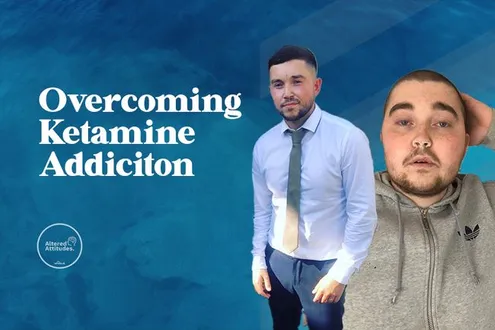Crystal meth is highly potent. Even from a single experimentation, many users report a strong desire to continue using it. While the initial high may be pleasurable, heavy and consistent use of this highly addictive drug destroys lives.
The drug stimulates the central nervous system and promotes excessive production of dopamine. A cycle of abuse begins with the user perpetually chasing the initial high. As frequency of consumption and dosage increase, so too does tolerance.
Over time, the body becomes used to the presence of crystal meth and adjusts accordingly; unable to function normally without it. If usage stops, the body demands the drug by means of uncomfortable withdrawal symptoms.
Crystal meth abuse has a profound effect on the brain’s chemical balance. Someone addicted to the drug will compulsively seek it out despite an awareness of the adverse consequences of such behaviour.
It is commonly used within the chemsex scene along with other drugs such as GHB, methamphetamine, mephedrone, cocaine and ketamine.


Crystal meth is a synthetic chemical with physical, addictive qualities. The pleasurable and euphoric effects it elicits can compel users to consume increasing quantities. The drug stimulates the central nervous system and promotes excessive production of dopamine.
As frequency of consumption and dosage increase, so too does tolerance. A cycle of abuse begins with the user perpetually chasing the initial high.
Over time, the body becomes used to the presence of crystal meth and adjusts accordingly; unable to function normally without it. If usage stops, the body demands the drug by means of uncomfortable withdrawal symptoms.
Consistent consumption has a profound effect on the brain’s chemical balance. Someone addicted to crystal meth will compulsively seek it out despite an awareness of the adverse consequences of such behaviour.
While crystal meth’s physical and psychological effects can lead anyone along the path of addiction, some people may be more at risk of experimenting with the drug in the first place.
The factors that increase this risk of can be social, environmental and biological. People are more likely to develop an addiction if they’re vulnerable to multiple risks.
Environmental Factors
Spending time around people who abuse drugs can influence an individual’s behaviour. Parental guidance plays a big part in the likelihood of someone developing an addiction. Children who are exposed to drug abuse are more at risk of developing their own problem later in life.
Peer pressure can also result in recreational drug use. Teens are especially prone to engaging in risky behaviours, as the areas in the brain that manage judgement and self-control are still developing.
Psychological Factors
Different psychological factors can increase the risk of substance misuse. Trauma or challenging life experiences can push someone to use crystal meth in an effort to avoid difficult emotions.
Using crystal meth to self-medicate a mental health condition can also be a risk factor. It can become a habitual behaviour and develop into a severe substance abuse disorder.
From high compulsivity to adrenaline-seeking, some people may also have personality traits that make them more predisposed to mental health instability. An unstable mental state can render someone more at risk of developing an addiction. A dual diagnosis of addiction and a mental health condition is complex and requires specialist care.
Genetic Predisposition
While some people may be able to use drugs recreationally, others will feel a strong impulse to consume to excess.
Neuroscience has shown that people have varying levels of ability and brain function to control impulsive urges. If these genes are passed down through the generations, family members can be more prone to developing addiction problems.
Changes in Brain Chemistry
Crystal meth abuse affects the brain’s chemical systems and functions. As the level of dopamine produced by crystal meth is so high, it negatively impacts the brain’s ability to create dopamine naturally. Consequently, long-term crystal meth users have lower, natural levels of dopamine. This can lead to depression and feelings of hopelessness when attempts are made to withdraw from the drug. Stopping crystal meth use is a struggle and inevitably requires professional help.
Addiction is shrouded in stigma. As such, an addict is likely to attempt to conceal their crystal meth use. This can make it tricky to identify a problem in its early stages.
If left untreated, addiction spirals out of control. While overcoming a dependency is not easy, it is possible. The earlier intervention occurs, the greater the chances of a successful outcome. Spotting the early warning signs of crystal meth abuse can help to prevent the consequences of long-term addiction.
Physical Symptoms
- Rapid heart rate
- Loss of appetite and weight loss
- Nausea
- Difficulty sleeping
- Increased blood pressure
- Anxiety or panic attacks
- Overheating
Behavioural Symptoms
- Avoiding contact with loved ones
- Repeated lying, dishonesty or deceit
- Poor performance at work or school
- Mood swings
- Decreased participation in activities or hobbies
- Self-isolation
- Irritation and agitation
Crystal meth holds the highest classification for an illegal substance in the UK because of the harm it’s considered to cause.
The assumption is that recreational crystal meth use involves an element of control. However, in reality, any abuse of controlled drugs is harmful to your health.
Addiction usually refers to a physical dependence but it can also include a psychological one. Many people who abuse crystal meth become increasingly tolerant to it. Tolerant users will often change their method of use to intensify the drug’s effects. When smoking no longer produces the desired high, an individual may switch to intravenous use.
If you have tried to stop using crystal meth but repeatedly return to it, it’s likely that you have developed a physical dependence. A preoccupation with the drug and an inability to refrain from its use are the first signs of addiction.









